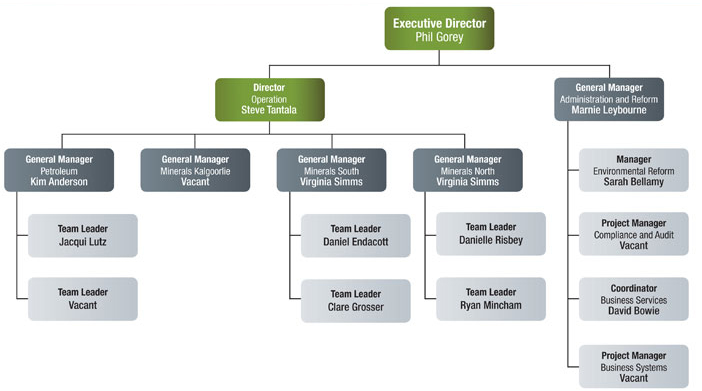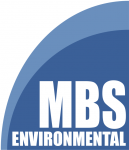A number of changes to the regulation of resource projects in Western Australia are being implemented by DMP in 2013 to 2014.
MBS has prepared this briefing note to advise our clients of MBS Environmental’s perspective on these changes, how they may affect projects, and what can be done to prepare for and respond to the changes.
The main changes are:
- The Reforming Environmental Regulation Program.
- Restructuring of Environment Functions within DMP.
- Online Submission of Annual Environmental Reports.
- The Mining Rehabilitation Fund.
Reforming Environmental Regulation Program
The Reforming Environmental Regulation (RER) Program was established by the former Minister for Mines and Petroleum with the intent of making the environmental regulation of resource projects more efficient, and achieving better outcomes for both industry and the environment.
MBS Environmental has followed the development of RER since it was announced, and recently attended a briefing presented by the RER Project Director. To date, only broad objectives for the RER have been formally set by its steering committee (the Ministerial Advisory Panel). The Project Director did however indicate a number of more specific ideas, which may include:
- Moving repetitive ‘standard’ tenement conditions into State-wide regulations. Tenement conditions would then only address issues specific to that location, such as protecting particular features of special environmental significance.
- Having variable timeframe targets for project approvals that are proportionate to the environmental risk and complexity of the proposal.
- Setting a range of penalties for non-compliance that are proportionate to the consequential risk or harm to the environment.
- Increasing the valid period for exploration Programs of Work to two years or more – this will save explorers from having to reapply when, as often happens, their exploration program is suspended or delayed for several months.
- Reducing the duplication of effort between all the agencies (DMP, Department of Environment and Conservation [DEC], Environmental Protection Authority [EPA] and Department of Water [DoW]) that are currently involved in approving and regulating resources projects.
- Increasing the use of internet and mobile technology, to make regulatory services more efficient (whether this means more efficient for industry, or for the regulators, remains to be seen).
MBS Environmental will continue to follow the development of RER, and will advise clients further as more information becomes available. In the meantime, please contact us if you have any questions or concerns about how RER may affect your projects.
Restructuring of Environment Functions within DMP
DMP has recently announced an organisational restructure introducing two new layers of management between team leaders and the Executive Director Phil Gorey. These new roles are reportedly to assist with implementation of reforms and new reporting requirements going forward. The previously separate groups of Native Vegetation Management and Environmental Operations have been merged to form one all-encompassing environmental team. The revised structure is shown in Figure 1.

At the time of preparing this briefing note, DMP was still recruiting to fill the General Manager roles. Significantly, the Kalgoorlie team has recently been down to one environmental officer, with another officer planning to return from maternity leave in the next few months. Until the Kalgoorlie team numbers are increased, officers from both the North and South regions are being pulled in on a project by project basis to assist. For those with projects in the Kalgoorlie region, we recommend you allow increased time in project schedules and liaise closely with DMP to identify likely project officers and forewarn them of significant applications.
Online Submission of Annual Environmental Reports
In line with its stated intent of making more use of internet technology, DMP will require all Annual Environmental Reports (AERs) for mining tenements to be submitted through their new web-based reporting system, EARS2. The system has been available since late 2012, but will be mandatory from 1 July 2013. If you have not already done so, you will need to ask DMP to set up an EARS2 account for online reporting. You will also need to nominate an administrator who will manage the account.
MBS Environmental has attended several briefing sessions on EARS2. The system quite rigidly enforces the structure and content requirements of the current DMP reporting guidelines. The system will not accept the report until all expected information is entered, and in the format required by the system. In particular, detailed disturbance and rehabilitation areas for each individual tenement and feature must be entered in a specific format, as well as the corresponding areas approved under Mining Proposals.
The system will highlight where disturbed areas differ from approved areas, and we recommend that tenement holders:
- Identify what areas have been approved for their projects. Where the project has evolved over time and approvals pre-date the current Mining Proposal system, this may take some time to complete as previous environmental assessment documents (Notices of Intent) often did not include specific land disturbance data or locations. Discussions may need to be held with DMP where documents are not to hand or don’t contain the information necessary to complete the requisite disturbance tables. This information is typically also required as part of closure planning and would assist with preparation of Mine Closure Plans now required to be submitted to DMP.
- Conduct a review of disturbed versus approved areas, well ahead of their AER due date. If potential or actual differences are identified, operators may need to talk to DMP to resolve these differences, before the AER is submitted. In some cases, DMP may accept that minor differences are still ‘generally in accordance’ with what was approved. In other cases, penalties may apply.
In addition, you must also review compliance with all relevant environmental obligations (including tenement conditions, commitments made in approval documents, and conditions of other permits or licences issued for the project) and enter any non-compliances into the reporting system.
MBS Environmental is well placed to help tenement holders transition to the new reporting system, and has:
- Prepared many AERs according to the current DMP guidelines.
- Submitted several AERs on the new Electronic system EARS2.
- Prepared environmental obligation registers for many resource projects, and conducted comprehensive compliance reviews.
- Collated disturbance and rehabilitation data from aerial and ground surveys at many minesites, and formatted the data according to DMP requirements for AERs.
- Reviewed approved against actual areas of disturbance for several operations, and provided advice to operators on resolving potential or actual differences with DMP.
Please contact us if we can provide further information on the new reporting system, help you with administering your EARS account, or assist with your future AER submissions.
Mining Rehabilitation Fund
The Mining Rehabilitation Fund (MRF) is a fund that the State can use to rehabilitate mining and exploration disturbances, where the operators have reneged on their rehabilitation obligations, and is intended to replace the current system of rehabilitation performance bonds.
The fund will be built up by a levy on disturbances. The levy is made law under the Mining Rehabilitation Fund Act 2012, and implemented through the Mining Rehabilitation Fund Regulations 2013 (MRF Regulations).
The MRF contribution for each project is calculated based on:
- The Rehabilitation Liability Estimate (RLE). This is essentially a rough estimate of how much it should cost to rehabilitate the project, according to standard rates set out (in dollars per hectare) by the MRF Regulations.
- The Fund Contribution Rate (FCR). This is essentially the State’s ‘take’ of the RLE. The FCR is set by the MRF committee (the Mining Rehabilitation Advisory Panel) and the initial rate is 1% of RLE, but the committee will have powers to vary the FCR up or down as it sees necessary to maintain a sufficient MRF.
Annual MRF ‘returns’ will be through a web-based system. Project operators will enter current areas of disturbance and rehabilitation, in much the same way as for the new AER system (see above), although it is not yet clear how the two systems will integrate, if at all.
The MRF system will apply the standard rates to each area of disturbance and calculate the MRF contribution. The system will electronically send the tenement holder an assessment notice for the required contribution that can then only be paid electronically. The first MRF assessment notices are projected to be issued in October 2013. Care should be taken to ensure the email addresses provided as part of the registration process are closely monitored so important information relevant to the MRF is not overlooked.
There will be penalties for false or misleading MRF returns, and sites will be audited from time to time – rather like ordinary tax returns. DMP has emphasised that good record-keeping (as with ordinary tax returns) will be essential.
The MRF has been operational, but voluntary, since 1 July 2013, and will become mandatory from 1 July 2014. All tenement holders should have already received letters from DMP advising them of this change and requesting them to use the DMP online system to advise them if they wish to voluntarily enter into the MRF scheme in the initial voluntary period. During this transition period, new projects or expansions will generally not need to put up any new bonds, but this should be confirmed with the relevant DMP case officer. DMP has indicated that once the first MRF contribution is received, existing bonds should be returned ‘within a few weeks’.
DMP still reserves the right to impose bonds on a site that is not complying with its rehabilitation or other environmental obligations, as well as taking MRF contributions. Projects operating under State Agreements may join the MRF or continue to put up bonds, depending on the individual project.
One potentially important difference between bonds and MRF contributions is that bonds are based on approved areas of disturbance, whereas MRF contributions are based on actual areas of disturbance. This has potential positive implications for projects where:
- They are moving from an exploration to project development stage. The levy in initial years will likely be substantially lower than the full upfront bond previously required to be lodged before work could commence.
- Where projects have staged implementation over time – for instance, with multiple pits, slowly expanding waste rock dumps, or multi-celled TSFs.
- Where projects have been delayed after approvals have been obtained, and minimal or no on-ground works have been completed.
To encourage progressive rehabilitation, a discounted RLE rate will apply to areas that have been ‘successfully rehabilitated’, although if the rehabilitation fails, it will revert to the standard rate for the type of disturbance. It is not clear how rehabilitation success will be determined for MRF purposes, but it is likely to be based on conformance to strategies and criteria set out in approved Mining Proposals and Mine Closure Plans.
MBS Environmental recommends that operators assess their potential liability under the MRF. In some cases, savings may be realised by joining the MRF early, compared to the costs of maintaining bonds. This will need to be assessed on a case by case basis.
As noted above, MBS Environmental has a great deal of experience in mapping, evaluating and reporting on mining disturbances and rehabilitation and is well placed to help project operators prepare and document their MRF returns. We have already helped several operations to assess their potential MRF liability and submitted MRF returns.
Please let us know if we can help you with any of the changes in DMP processes.
